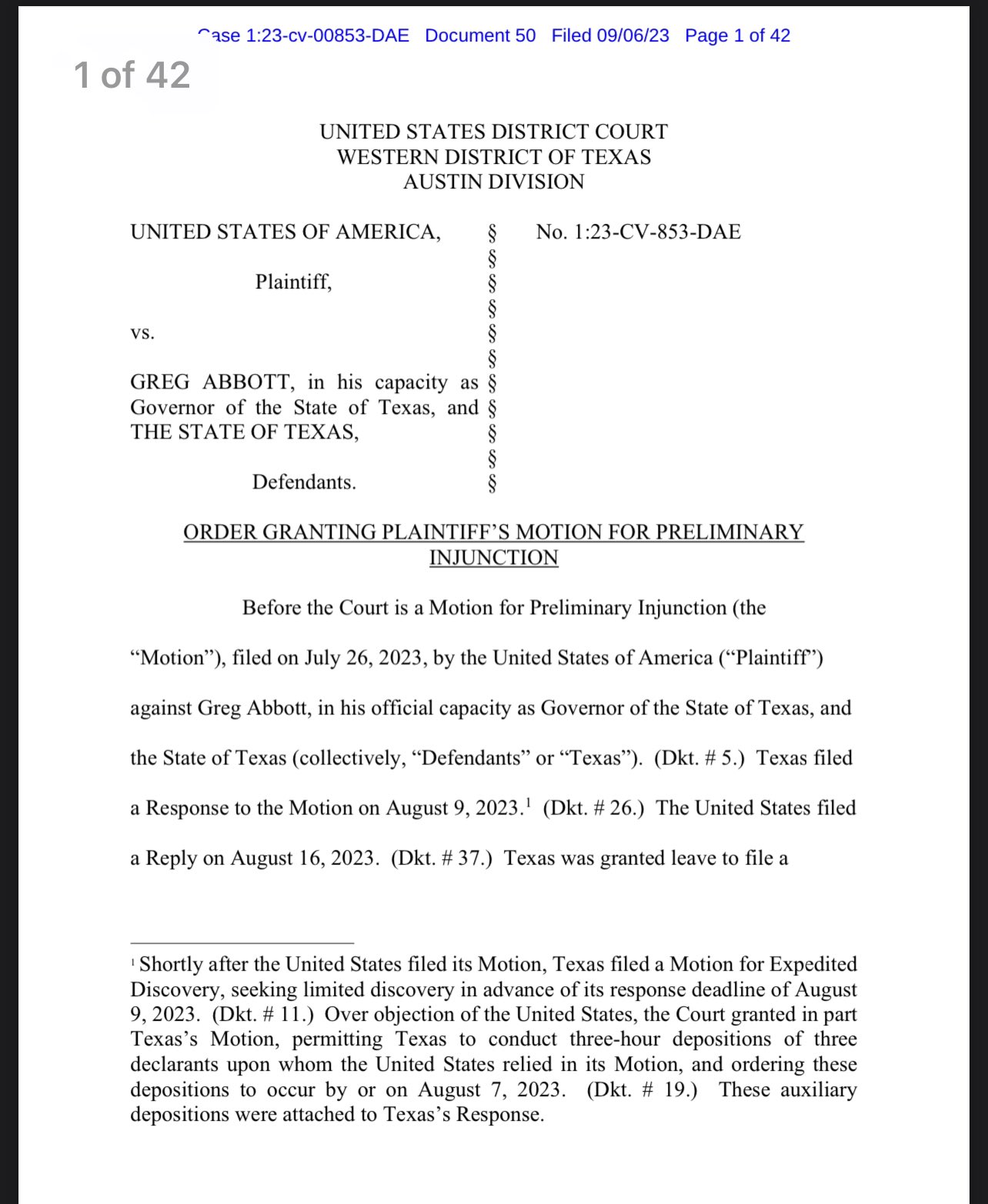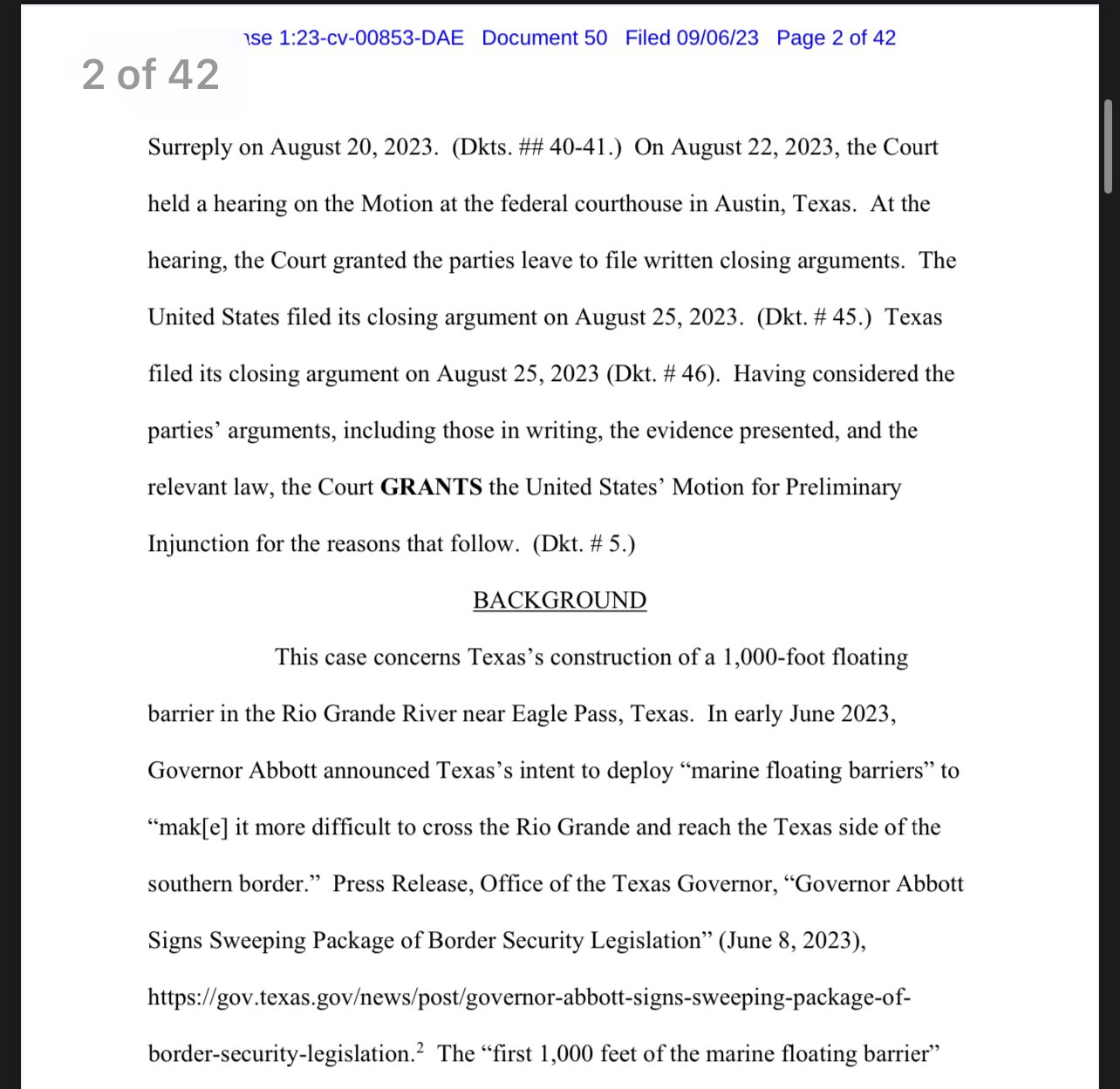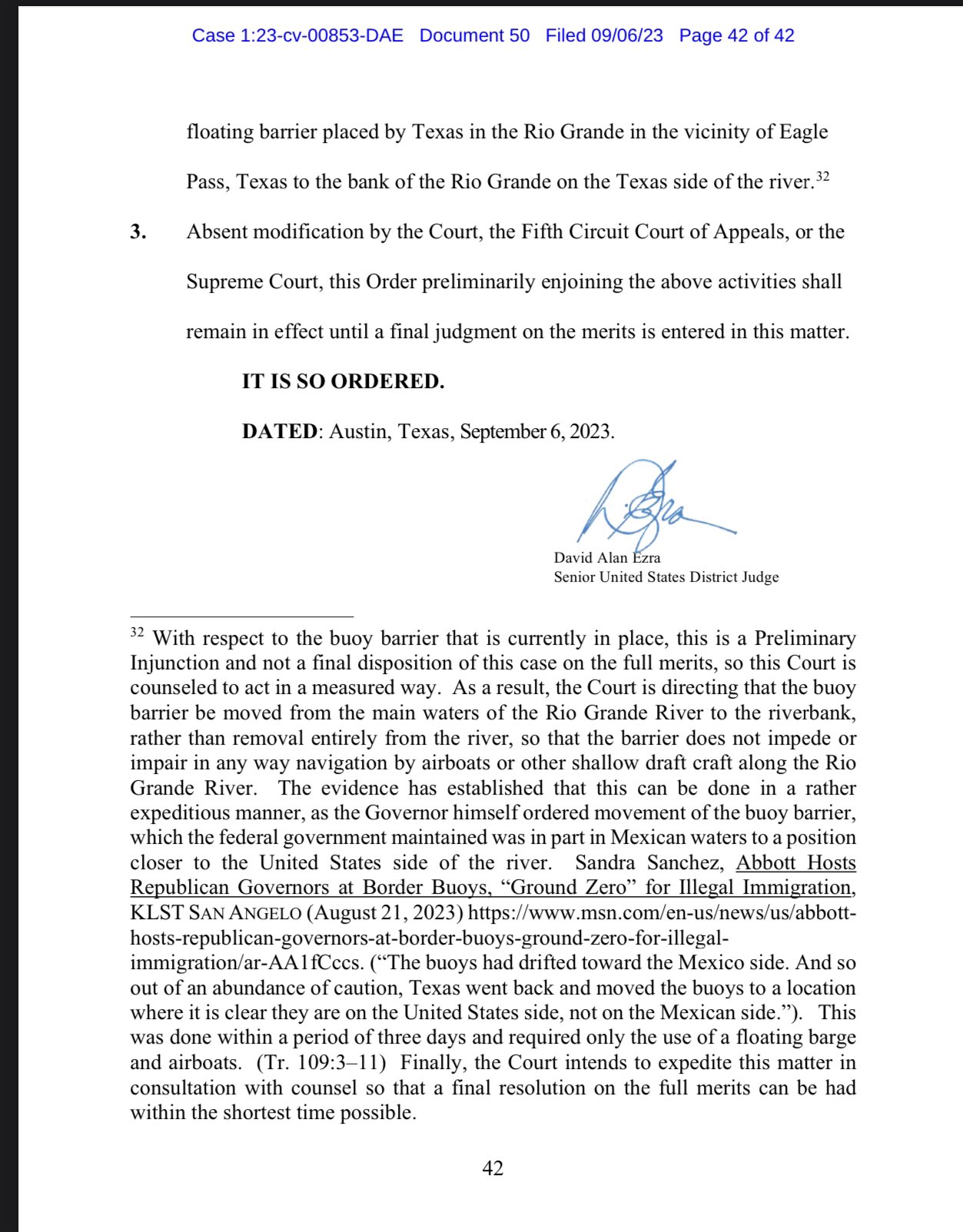A federal judge ruled Wednesday that Texas must remove a floating barrier in the Rio Grande between the United States and Mexico.
U.S. District Judge David Ezra issued a preliminary injunction for the state of Texas to remove all 1,000 feet of river buoy barriers at Eagle Pass.
Texas reportedly has until September 15th to comply with the order.
“In a legal win for the Biden admin DOJ, a federal judge has issued an injunction against the state of Texas, ordering it to remove all 1,000 feet of river buoy barriers in the Rio Grande in Eagle Pass, TX by September 15th,” Fox News national correspondent Bill Melugin reported.
BREAKING: In a legal win for the Biden admin DOJ, a federal judge has issued an injunction against the state of Texas, ordering it to remove all 1,000 feet of river buoy barriers in the Rio Grande in Eagle Pass, TX by September 15th.
See ruling here: https://t.co/OQp1lFeGHu— Bill Melugin (@BillMelugin_) September 6, 2023
Some social media users questioned if Texas even has a border now.
*TEXAS MUST REMOVE BORDER BARRIER AT BIDEN’S REQUEST, JUDGE SAYS
does Texas have a border at all now?
— zerohedge (@zerohedge) September 6, 2023
The Biden administration has officially announced its open borders policy.
The DOJ has convinced a judge to issue an order against the State of Texas to remove all 1,000 feet of river buoy barriers at Eagle Pass.
The federal injunction gives Texas until September 15 to comply. pic.twitter.com/tBEVJCuNuL
— Kyle Becker (@kylenabecker) September 6, 2023
The Associated Press reports:
Ezra also cast doubt on Texas’ rationale for the barrier, writing that the state produced no “credible evidence that the buoy barrier as installed has significantly curtailed illegal immigration.”
The lawsuit was brought by the Justice Department in a rare instance of President Joe Biden’s administration going to court to challenge Texas’ border policies.
Texas immediately appealed the ruling.
“Today’s court decision merely prolongs President Biden’s willful refusal to acknowledge that Texas is rightfully stepping up to do the job that he should have been doing all along,” Texas Gov. Greg Abbott said.
Gov. Abbott’s office said in a statement it’s “prepared to take this fight all the way to the U.S. Supreme Court.”
The Texas Tribune added:
The 1,000-foot-long string of buoys, separated by serrated saw blades and supporting a submerged mesh net, has floated in the middle of the river next to Eagle Pass since July, sparking protests from the Mexican government and migrant advocates alike.
It’s the latest effort by Abbott to deter migrants from crossing the border under the umbrella of Operation Lone Star, which he launched in March 2021 shortly after President Joe Biden took office. Abbott has deployed state troopers and National Guard members to the U.S.-Mexico border and has lined the river with everything from shipping containers to rows of concertina wire.
Meanwhile the federal government, which has primary jurisdiction over immigration laws, has largely avoided a political confrontation with the governor.
That changed on July 24 when the U.S. Justice Department sued Texas in an Austin federal court, arguing that the floating barrier was installed without required federal authorization and threatens relations with Mexico.
The Justice Department said in its lawsuit that Texas didn’t receive the necessary authorization for the structure from the U.S. Army Corps of Engineers and that the barrier obstructs navigation on the Rio Grande.
Lawyers for the state countered that the barrier isn’t a structure that requires authorization, and that it notified the International Boundary Water Commission — the binational body that regulates the Rio Grande — before installing the barrier.
Read the full order HERE.











